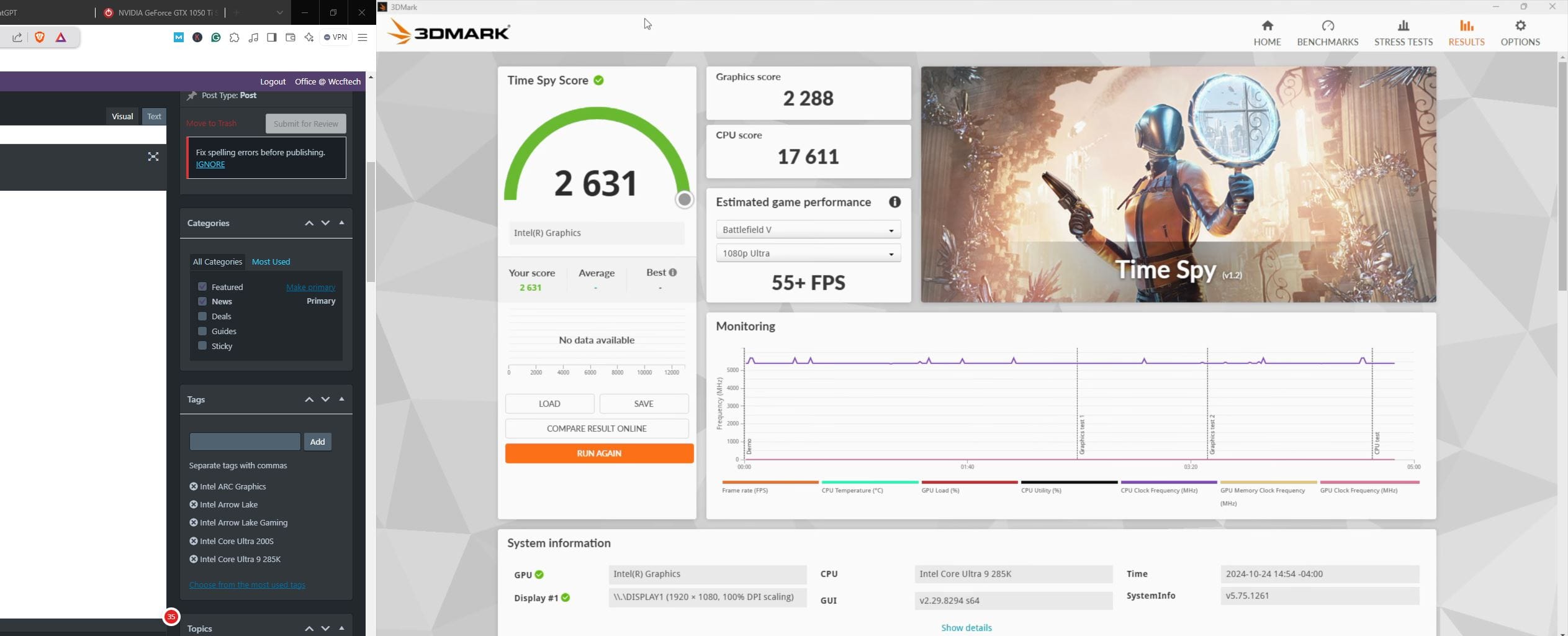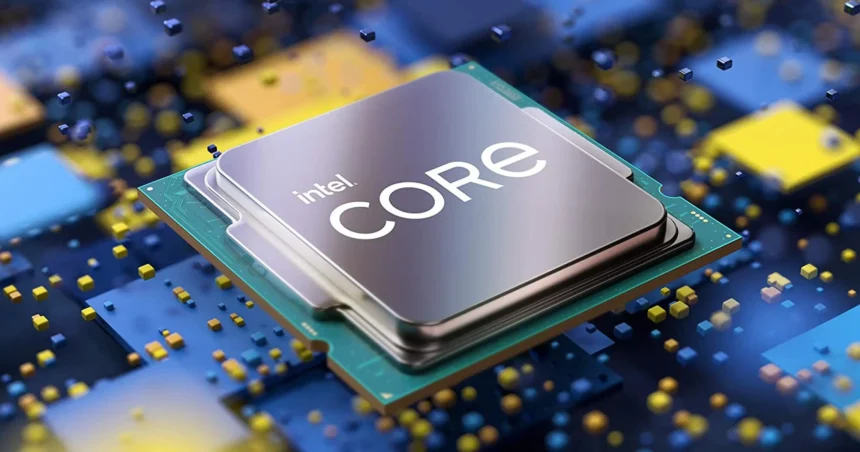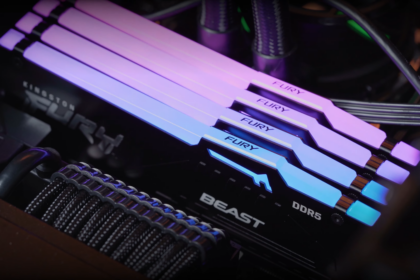The new Intel Core Ultra 200S processors have entered the market to mixed reviews, showing both promising and less impressive aspects. While they may not be the top choice for gaming enthusiasts, they offer solid performance for productivity tasks. Some gamers had anticipated a more substantial performance increase, which these CPUs deliver to an extent, regardless of whether a dedicated GPU is used.
These chips’ integrated graphics (iGPU), built on Intel’s Arc Alchemist architecture, are a standout feature. A recent review by ETA Prime put the Intel Core Ultra 9 285K to the test, highlighting its iGPU with 4 Xe cores running at 2000MHz. Though still behind AMD’s APUs in raw power, the benchmarks show a notable improvement in gaming performance, marking a step forward for Intel’s integrated graphics capabilities.
4-core Intel Xe graphics mark a significant leap for Intel Arrow Lake
In the 3DMark Time Spy test, the iGPU on Intel’s Core Ultra 9 285K scored 2288 points, just shy of the 2336 scored by NVIDIA’s GTX 1050 Ti—a popular entry-level GPU from the Pascal lineup. This performance allows the iGPU to deliver 40–60 fps in many games at medium settings and 1080p resolution. Additionally, the Core Ultra 9 285K demonstrated impressive power efficiency, with consumption mostly staying between 50 and 60W, peaking at around 80W, a clear improvement over previous generations.

While the Core Ultra 200S series may not be the first choice for a gaming rig without a discrete GPU, these iGPUs show Intel’s progress in integrated graphics, and there’s hope for continued advancement in this area.

However, regarding graphical capabilities, the Core Ultra 200S still trails behind AMD’s powerful Ryzen 8000G series APUs. Intel’s decision not to integrate its latest Xe2 cores into the Arrow Lake lineup may limit these processors, especially for users looking for robust graphics at lower power levels. The Xe2 cores could have made these chips even more compelling for lighter gaming without needing a dedicated GPU.











